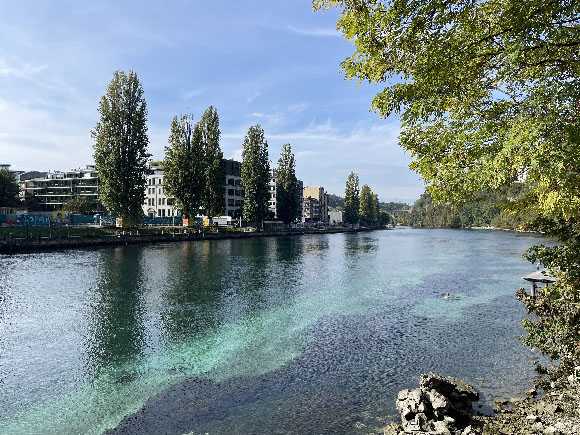

A central element in the landscape structure of the Geneva basin, the Rhône gives life to a multitude of landscapes. In its sinuous meanders, plant species, human beings and non-human beings negotiate their living conditions; their histories and narratives intertwine to compose the very fabric of Geneva's territory. How can we observe, tell and situate these multiple narratives of the Rhône and its landscapes? In the light of the socio-ecological transition, how can we account for the shifting nature of these territories and their human and non-human inhabitants?
As part of the 2020-2024 Conventions program agreement, the Paysage Projet Vivant research group is working in partnership with two cantonal offices, the office of Agriculture and Nature (OCAN), and the office of Water (OCEau), to set up a Landscape Observatory of the Rhône in Geneva.
The Saisons du Rhône project places the landscape at the heart of a process which aims to bring together present narratives and visions for this territory. The Rhône is a vital socio-ecological continuity, offering many qualities to a densely populated urban area. The complexity of climatic and environmental issues, as well as the increase and diversification of the various types of actors and uses of these multifunctional open spaces, calls for new forms of management and/or governance that transcend both the sectoral policy frameworks and administrative boundaries.
The Saisons du Rhône project adopts a research-action approach based on landscape mediation. The aim of the project is to create a “space”, involvement, or community, where landscape becomes a mediation tool, bringing together the many voices of the Rhône, institutional players and local residents, to question and debate the possible futures of this changing territory. Landscape is considered here not only as a physical, functional and experiential reality, but also as a unifying notion that brings together individual and collective perceptions and representations of the living environment. It's a means of sharing, consulting and co-constructing to debate the future living conditions of the Rhône estate.
Our mission:
Our activities:

Project partner(s)
Project leader - team
Natacha Guillaumont
(HEPIA),
Laurence Crémel
(HEPIA),
Charlotte Chowney
(HEPIA)
